8 SEM Metrics for Optimal SEM Analytics Best Practices

Many marketers use SEM interchangeably with PPC when they should treat SEM as a holistic strategy where SEO and PPC play off each other.
This brings us to the next question.
What metrics should you track to ensure these two tactics work together to drive business goals?
Today, we explain why this integrated approach is greater than the sum of its parts and suggest eight SEM metrics to measure impact across all campaigns.
- What are SEM Metrics and SEM Analytics?
- 3 Biggest Reasons to Measure Your Campaigns and Metrics
- 8 SEM Metrics to Track How Well Your SEO & PPC Ads Work Together
- How to Create a Valuable and Client-Friendly SEM Report with DashThis
- How to Automate Your SEM Analytics & Reporting!
What are SEM Metrics and SEM Analytics?
Search engine marketing (SEM) metrics are a set of quantifiable measures that track your search engine optimization (SEO) and pay-per-click (PPC) efforts holistically.
Agency marketers usually set these metrics after setting goals and key performance indicators (KPIs). Often measured in automated SEM analytics reports, the metrics help us understand how well SEO and PPC work together in a digital marketing strategy.
Take the automated SEM analytics report below, for instance. It shows the impact of your SEO and PPC efforts on revenue and return on investment.
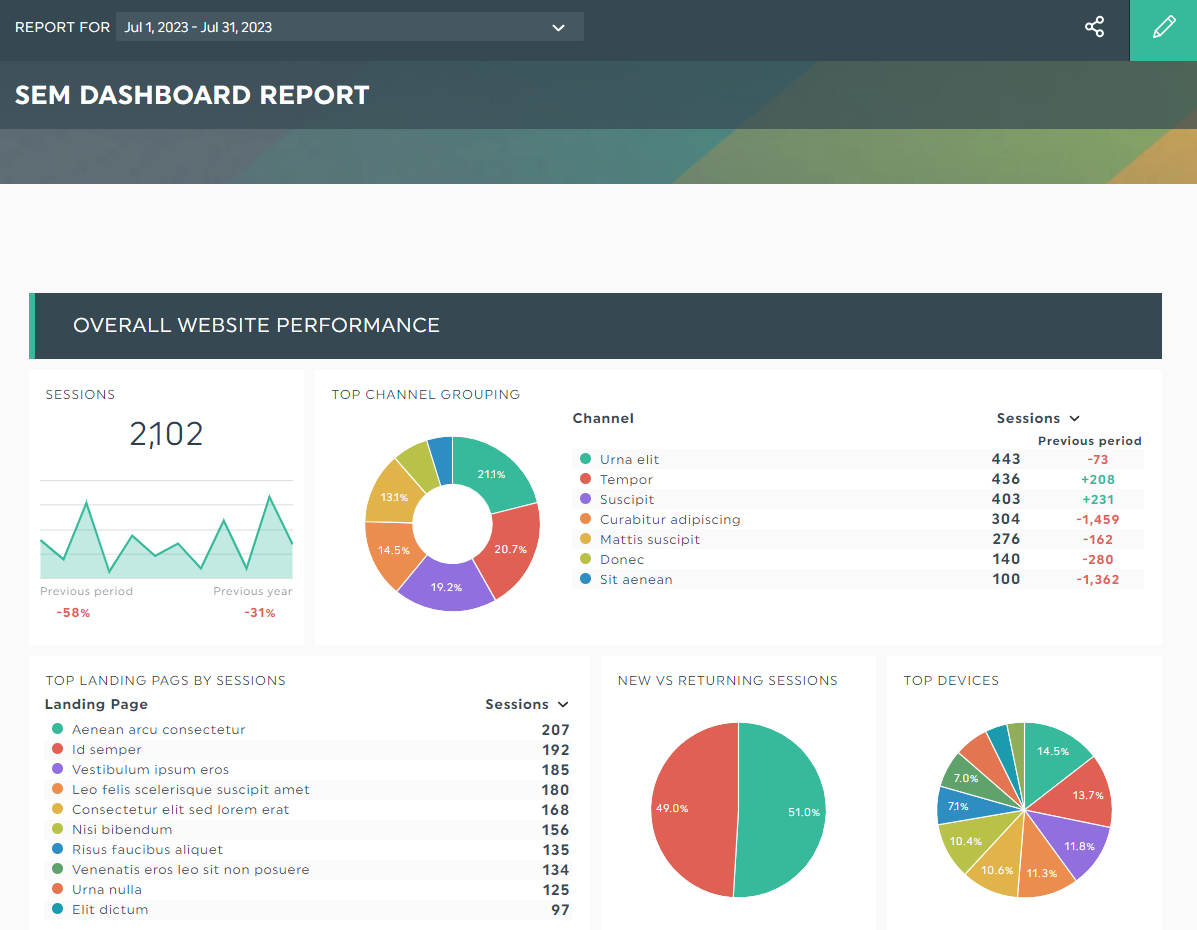
Grab this SEM analytics report with your own data!
3 Biggest Reasons to Measure Your Campaigns and Metrics
From identifying hidden sales opportunities to getting buy-in from potential customers, your SEM metrics provide you with actionnable insights to help your decision-making & strategize the next move.
Here's why you should measure your SEM campaign's analytics on a daily basis.
Prove you achieved business goals and get buy-in
Marketing is often seen as the second lead to sales when it should be treated equally.
Your marketing strategy also drives business outcomes, like nurturing leads, overcoming objections from skeptical buyers, and retaining existing customers.
To get client buy-in, track your SEM KPIs and metrics in a report to prove your strategies achieved the business goals. With your SEO and PPC metrics in one place, stakeholders can quickly gauge the impact of each metric in a campaign performance holistically.
Let’s illustrate this with an example.
Suppose a client, a new natural cleaning eCommerce store, wants to drive brand awareness and sales (business goals). Together, you both set out to increase the average order value by 10% and the number of orders by 25% in September. (KPI). This approach will ensure that you make informed decisions on delivering optimal user experience so you can achieve this goal. Here’s an action you could take:
To increase rankings for low-hanging fruit keywords on the SERPs (SEM strategy), you bid for keywords in the short-term (PPC) and create blog posts to drive organic traffic and attract customers in the long term (SEO). You could also work on improving your bounce rate to make sure potential customers are not bouncing back, and you make the most value out of your PPC & SEM traffic. Maybe you could also work on your a/b testing creatives to improve ad performance while you focus on building backlinks to your targeted keywords.
By working both the SEO & PPC side you are maximising your chances of getting the most out of search traffic.
And now, you decide you’ll track everything from Google Ads, Microsoft Ads & Semrush data in an automated SEM report, like the one below. This will help you monitor easily the progress you make towards your goal. Also you’ll be working on improving the results instead of working on gathering the data.
You track Google Ads and Ahrefs in an automated SEM report, like the one below.
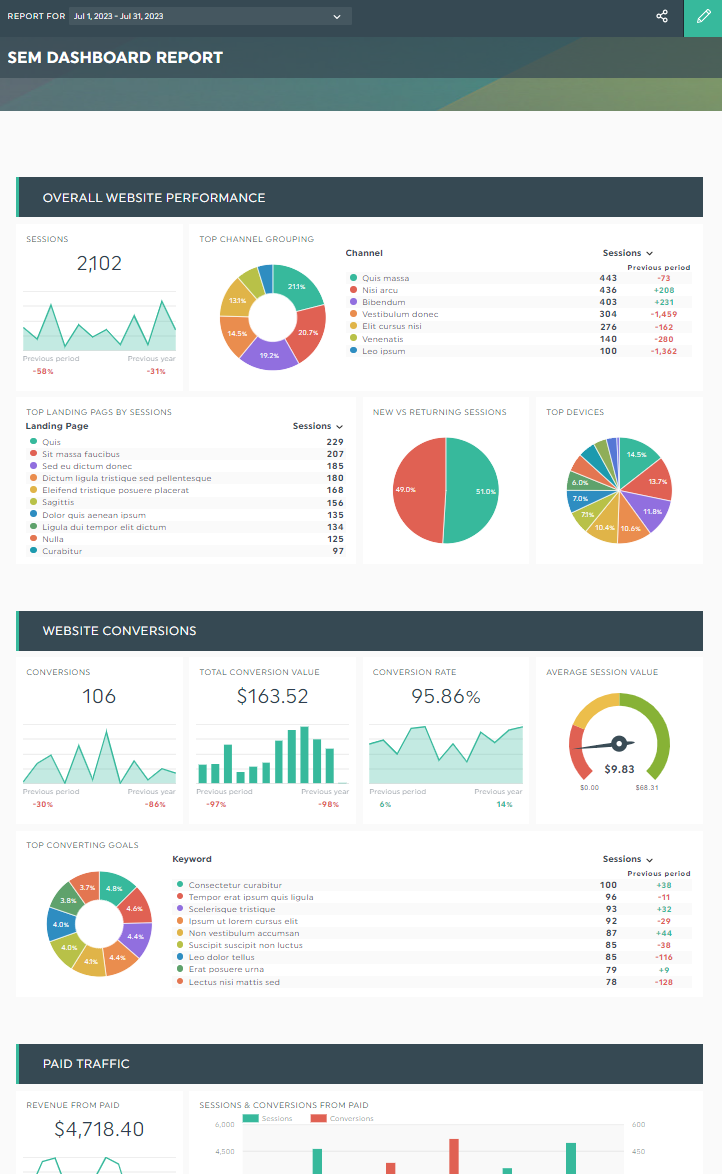
Grab this SEM report with your own data!
With this, in just a 30-second glance, the client sees with beautiful visualization, how organic search and paid search impacted revenue growth and gives you the green light for next month's campaign. On your end, you have more time to focus on the strategy, how cool is that!?
Identify hidden sales (and savings) opportunities
With PPC advertising and SEO services costing $9,000-$10,000 and $1,500 to $5,000/month respectively, there's an urgent need for budget-strapped businesses to get more bang for their marketing bucks.
By tracking your SEM metrics daily, you gain insights into every element within the campaigns—keywords, ad groups, landing pages—and focus on what works best.
Let’s go back to using the fictional natural cleaning eCommerce store as an example.
Say the paid ads team is keeping a close eye on ad spend and notices a drop in performance on Day 4th. CTRs are slipping, CPCs are rising, and the client is freaking out over the exorbitant costs.
Instead of shutting down the underperforming ad campaigns, your paid ads team digs deeper into the SEM report—after calming down the client, of course—and uses the following questions to identify the root cause behind the wasted spend:
- Which landing pages are attracting our target audience to buy our product?
- Which ads are generating the wrong types of clicks?
- Our ads are earnings impressions but not clicks — how can we create more relevant ad copies?
- Should we adjust our bidding strategy? — We might find a better way to reach our goal?
In the analysis, the team uncovers the culprit behind the poor-performing Google Ads. They’d focused too much on broad, high-volume keywords (!) when they should've been bidding on high-intent keywords to maximize per dollar spent.
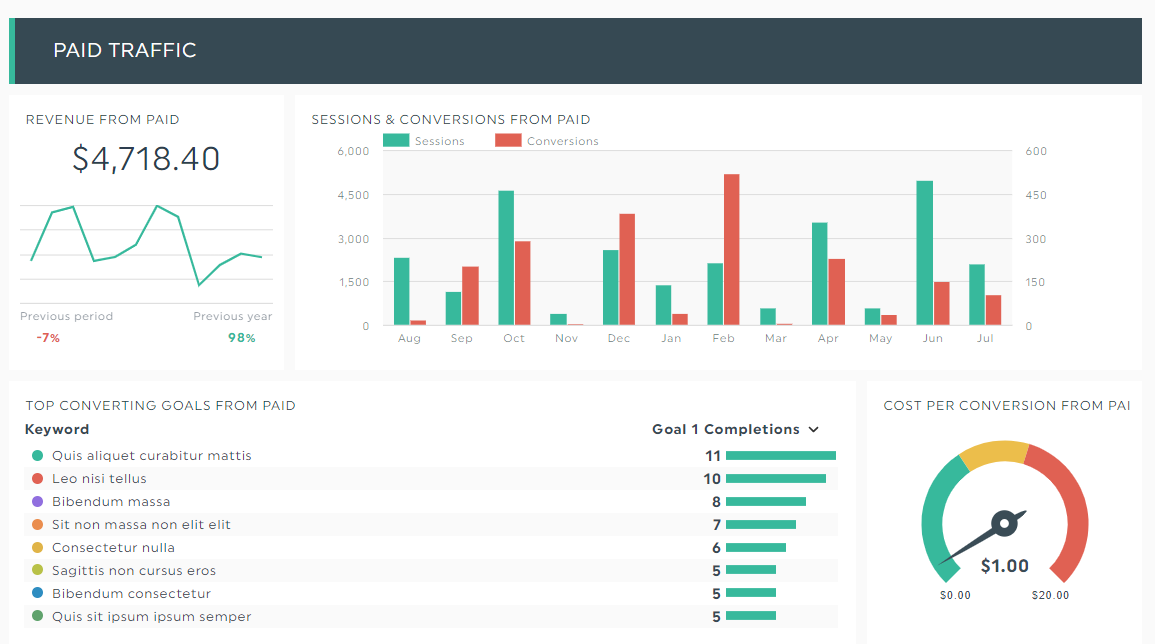
If the team hadn’t measured the metrics, it would’ve continued to let the ads run and wasted more money.
Understand campaign effectiveness quickly
And finally, tracking SEM metrics tells you the overall effectiveness of your PPC and SEO content marketing strategy.
You can quickly identify profitable campaigns and allocate more resources to generate more revenue.
For example, a high-intent blog post that generates $15,000 in direct sales will require more “upkeep” than a listicle that barely gets any engagement.
The natural cleaning eCommerce store might double down its content refreshing efforts to maintain the blog post’s top spot on the search engine results page, boosting sales at a steady stream.
8 SEM Metrics to Track How Well Your SEO & PPC Ads Work Together
There are numerous variables to consider when choosing what to measure (e.g., target market, can you go straight to lead generation from brand awareness?).
Fortunately, there are certain key metrics that work for all campaigns everywhere. Keep these eight SEM metrics in mind as you perform keyword research.
Click-through rate (CTR)
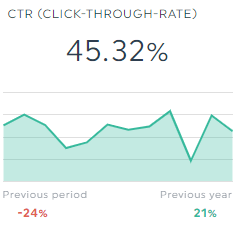
Click-through rate (CTR) is the percentage of clicks received from all users who see an ad or post. If your CTR is 45%, that means 45 out of every 100 searchers click through your post or landing page.
Why it's important: High CTR indicates people are checking out your website. The more visitors you have on your site, the more likely you can convert the bulk of it to customers. Also, search algorithms love high CTR as it usually shows high signs of relevance. They are constantly re-calibrating in real-time to offer the best results to users. By optimizing your CTR, you are not only gaining more traffic out of your impressions but also generating more impressions.
How to improve it if you don’t know where to start:
- Ensure your listings meet the search intent (e.g., a cupcake ad for a query about cupcakes, not muffins)
- Create a curiosity gap in your titles to entice clicks (e.g., X Surprising Mistakes That Drain Your Ad Budget)
- Differentiate your listings (e.g., highlight your unique selling proposition)
Cost-per-click (CPC)
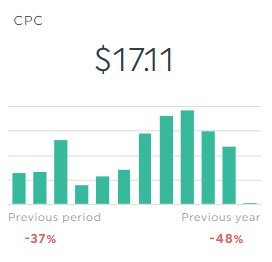
Cost per click (CPC) is the price you pay for each click. This is a dynamic metric that depends heavily on advertisers’ ad spend. It’s calculated by dividing the total cost of clicks by the total number of clicks.
Another similar metric is cost per action (CPA), which measures the price you pay for each customer’s specific action (e.g., completing a form).
Why it's important: Get more bang for your buck. The lower your CPC is, the more clicks you can fit into your budget and improve ROI.
How to improve it if you don’t know where to start:
Raise your Quality Score to reduce CPC.
Accounts with a Quality Score ≥ 6 enjoy a 16-50% decrease in CPC, whereas accounts with ≤ 4 see a shockingly high 25-400% increase.
Continue reading this post to learn how to improve your Quality Score.
Conversion rate (CVR)

Conversion rate (CVR) is the percentage of users who completed a desired action measured against the total number of time people clicks on your ads over a specific time.
Why it's important: Track where searchers completed key actions across the customer journey. And calculate profitability.
How to improve it if you don’t know where to start:
Optimize ad copy and content with voice-of-customer data.
Use your customers' words verbatim!
Note how they describe their struggles, desires, and results. Add these words in the title, meta description, copy surrounding the call-to-action button, etc. and watch the number of conversions skyrocket.
Quality Score (QS)

Quality Score compares your ad quality to other advertisers on a scale from 1 to 10. It’s calculated based on expected CTR, ad relevance, and landing page experience.
Why it's important: Ads with high Quality Score cost cheaper and boast better placements.
How to improve it if you don’t know where to start:
Implement single keyword ad groups (SKAGs).
This strategy involves targeting variations of a single keyword rather than having 20 different keywords in an ad group.
For example, a cupcake store should focus only on cupcake-related keywords (cupcakes near me, vegan cupcakes, etc.), not category keywords like desserts, muffins, and ice-creams.
While the former results in a laser-focused ad, the latter often ends up irrelevant to the searcher’s experience.
When DemandMore implemented SKAGs for a client in the education sector, it increased Quality Score from 5.56 to 7.95.
Return on ad spend (ROAS)
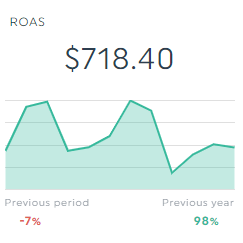
Return on ad spend is the revenue you get back for each dollar spent on advertising.
Why it's important: Evaluate how ad campaigns impact the bottom line, so you can allocate budget accordingly for the next month’s or quarter’s marketing efforts.
How to improve it if you don’t know where to start:
- Cut down your ad cost
- Segment your audience to improve targeting (e.g., shoppers who abandoned their carts, customers with low-to-moderate purchase frequency)
- Test different messaging across the remarketing funnel
Average Position
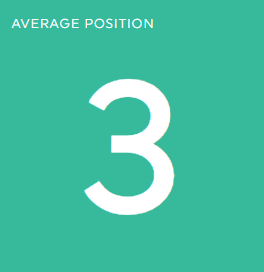
Average Position, refers to the average ranking of your webpages for queries. For example, if a URL ranks at the fourth spot for a query and eighth for another, the average position would be (4+8)/2 = 6th.
This SEM metric is located in Google Search Console.
Why it's important: Identify opportunities to improve search visibility.
How to improve it if you don’t know where to start:
Write valuable content to meet Google’s quality rater guidelines (Experience, Expertise, Authoritativeness, and Trustworthiness).
Your customers want fresh insights, not posts that rehash information already found on the SERPs. You're not ChatGPT!
Focus on content that actively solves your target audience’s problem, while showcasing your unique expertise and first-hand experiences.
Impression Share

Impression Share is the percentage of impressions an ad receives compared to the total number of impressions it could get. Brands that win all biddings get a 100% Impression Share.
Why it's important: Understand whether your ads might reach more customers if you increase your bid or budget.
How to improve it if you don’t know where to start:
- Raise your campaign budget or bids to increase visibility
- Run targeted ads that specifically address your customers
- Improve Quality Score
Cost per conversion (CPC)

Cost per conversion tracks how much each conversion costs from your ads.
Why it's important: Measure the cost of each valuable action and whether you're effectively spending the budget.
How to improve it if you don’t know where to start:
- Add negative keywords to prevent targeting searchers unlikely to become customers (e.g., a bakery that sells only muffins might exclude other desserts like cupcakes and ice-creams)
- Enhance landing page experience. Ads should direct searchers to a page relevant to their query (i.e., message match). For example, if a searcher clicks through an ad for a website pop-up builder, it should direct them to the product page, not the home page.
How to Create a Valuable and Client-Friendly SEM Report on DashThis
If you manage multiple accounts with hundreds of campaigns, ad groups, and keywords, you’ll need a frictionless reporting tool like DashThis to streamline your SEM reporting.
Automatically gather your SEO and PPC data across your favorite channels into one beautiful report. This saves you the hassle of manually grabbing them from one account at a time.
Fan-favorite features include:
- All-in-one dashboard that tracks data across all SEM channels in one place (e.g., Google Search Console + Ahrefs + Google Ads in a single report)
- Unlimited users, client accounts, and data sources, no matter what plan you’re on
- Native integrations with 40+ popular marketing channels (e.g., Bing Ads, social media platforms like LinkedIn)
- 40+ sleek templates with pre-built popular SEM metrics to communicate hard-won results
- Multiple sharing functionalities for different preferences (e.g., automatic email dispatch for time-strapped marketers)
- Notes and comments within the report to provide more context around metrics & analytics
Here’s how it works when you streamline SEM reporting on DashThis:
- Select SEM Report
- Connect your SEO and PPC tools with DashThis (e.g., Google Analytics)
- Pick your marketing metrics in Preset Widget
After a few seconds, you’ll see the metrics automatically popped up on the right side of the screen.
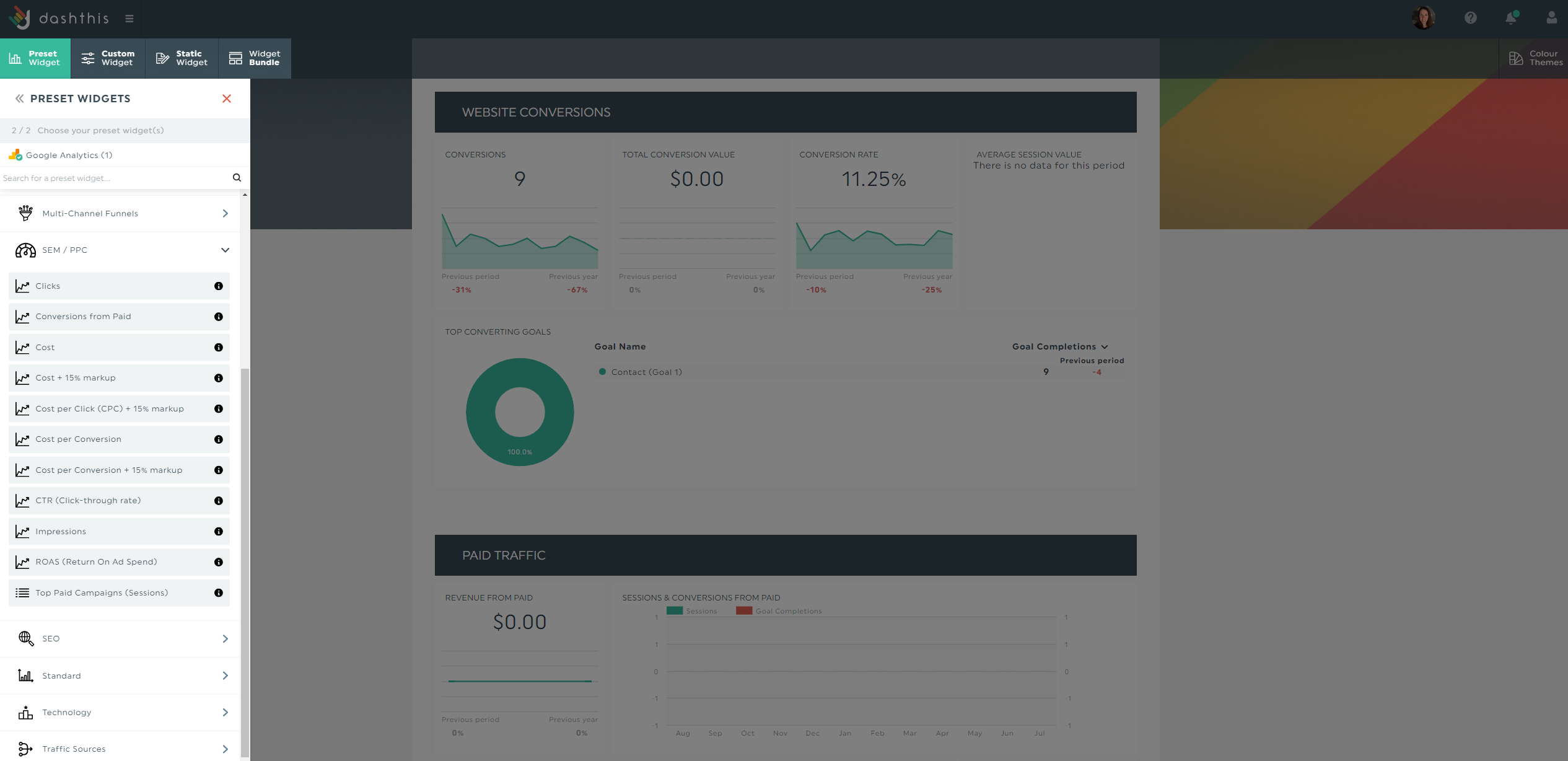
Drag and drop them to form a cohesive look. For example, if you want to illustrate how Quality Score impacts CPC, place both metrics next to each other (pro tip: add a note next to these widgets to explain what’s happening if your client has little marketing expertise).
Once you’re satisfied with the report, share it with stakeholders.
Hover to the Sharing Options icon and click Share by Email.
Set the dashboard period and frequency and enter the recipient’s email address. Include an additional note and include the report as a PDF attachment.
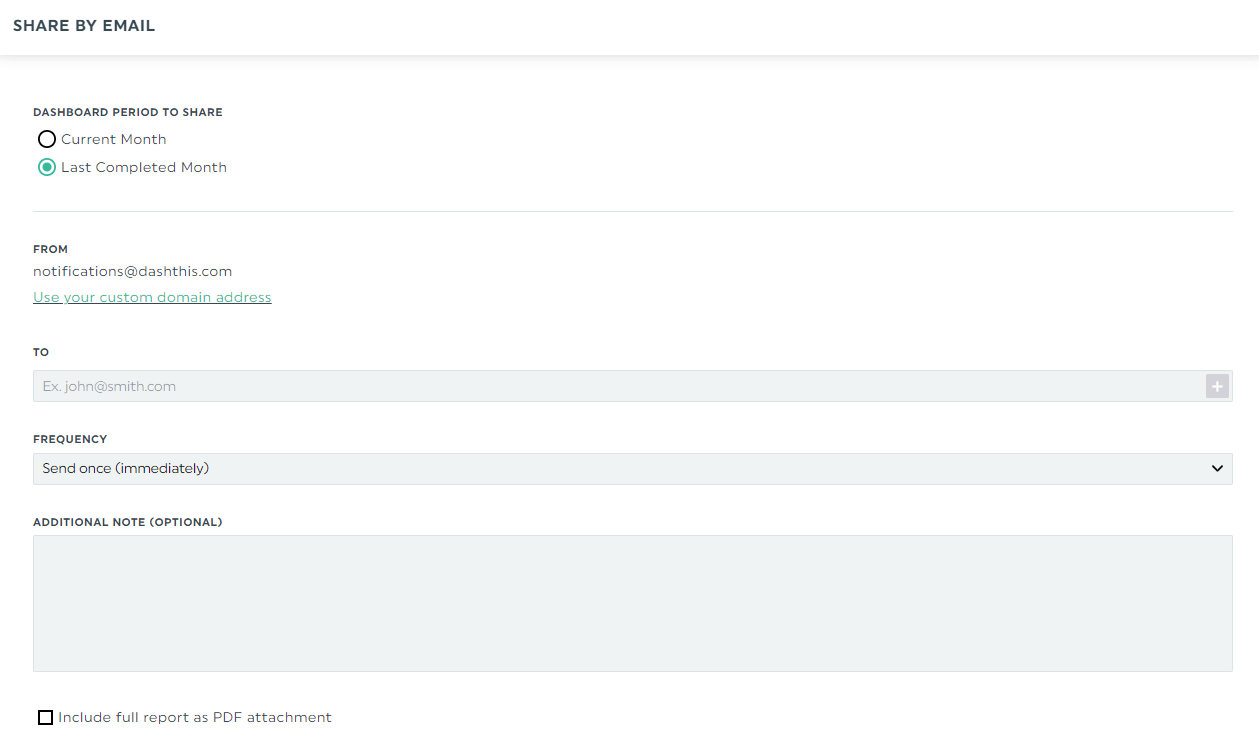
This “set it and forget” approach lets you schedule an automatic email dispatch without requiring you to manually prepare every report from scratch.
If you prefer to send it via Slack or other communication channels, copy the shareable URL link and send it over.
Running an internal meeting? Download it as a PDF, print, and pass it around the team.
Better yet, show it on the big screen. And let the eye-catching graphs and charts to the talking.
DashThis is the easiest SEM analytics tool to automate your reporting. Start your free 15-day trial today.
Automate Your SEM Reporting Today!
It’s easy to get lost in the sea of PPC and SEO data. SEM reports help you quickly see how your organic and paid traffic strategies play off of each other in your marketing campaigns.
If you’re stuck, start with these eight SEM performance metrics. These important metrics typically work for all campaigns everywhere.
Get started on DashThis to automate your SEM analytics reporting now.
Gather your entire SEM data across Google Ads, Ahrefs, Google Search Console, and more into a beautiful report. Start your free 15-day trial today.
Ready to start tracking your SEM metrics ?
Read More
Don’t miss out!
Automate your reports!
Bring all your marketing data into one automated report.
Try dashthis for free

